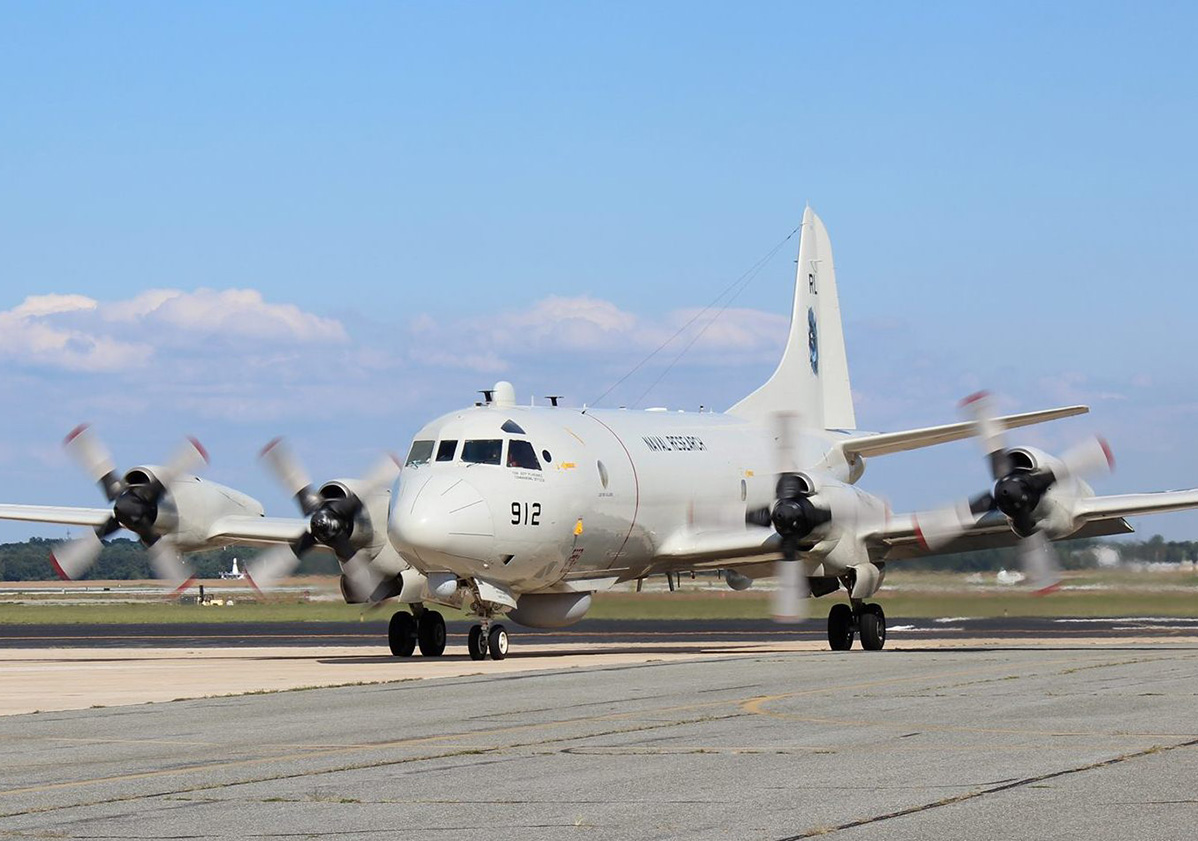De Havilland Twin Otter (UV-18)
 The UV-18 Twin Otter is a short-takeoff-and-landing unpressurized aircraft designed to be rapidly configured to support embarked projects. The UV-18 has a max endurance of four and a half hours (weight dependent), max altitude of 25,000 feet, and a speed range of 100 to 166 knots indicated airspeed.
The aircraft features two bubble windows (one port, one starboard), a research grade GPS antenna, a VHF/UHF/maritime band radio, an XM Satellite receiver option, two zenith ports, a project antenna mounting plate, two nadir ports in the nose to accommodate multiple downward-looking sensors or an EO/IR turret, and a large aft fuselage cut-out designed to mount sensor packages (radar, optical, turrets, etc.).
Additionally, the aircraft can be configured with a freefall sonobuoy deployment chute and removable wing pylon stations capable of carrying atmospheric or other sensors (max 245 lbs.). The interior can be configured as required to support equipment racks rated for 250 lbs. each, flexible operator locations, and has multiple project power outlets that include four 80 amp 28 VDC buses and four 15 amp 115 VAC 60 Hz buses.
The UV-18 Twin Otter is a short-takeoff-and-landing unpressurized aircraft designed to be rapidly configured to support embarked projects. The UV-18 has a max endurance of four and a half hours (weight dependent), max altitude of 25,000 feet, and a speed range of 100 to 166 knots indicated airspeed.
The aircraft features two bubble windows (one port, one starboard), a research grade GPS antenna, a VHF/UHF/maritime band radio, an XM Satellite receiver option, two zenith ports, a project antenna mounting plate, two nadir ports in the nose to accommodate multiple downward-looking sensors or an EO/IR turret, and a large aft fuselage cut-out designed to mount sensor packages (radar, optical, turrets, etc.).
Additionally, the aircraft can be configured with a freefall sonobuoy deployment chute and removable wing pylon stations capable of carrying atmospheric or other sensors (max 245 lbs.). The interior can be configured as required to support equipment racks rated for 250 lbs. each, flexible operator locations, and has multiple project power outlets that include four 80 amp 28 VDC buses and four 15 amp 115 VAC 60 Hz buses.
P-3 "Orion" (NP-3C)
 The NP-3C is an all-weather, medium-altitude, long-endurance aircraft configured to rapidly integrate science and technology projects. The NP-3C has a max endurance of 12 hours (weight and fuel dependent), max altitude of 30,000 feet, and a speed range of 160 to 300 knots indicated airspeed.
The aircraft can carry sensors in the nose and tail radomes and a configurable bomb bay equipment platform that can be outfitted with a spherical radome. Additionally, the aircraft has an external antenna mounting capability, the ability to mount sensors in the Doppler well, and the ability to drop sonobuoys from an unpressurized chute.
The interior of the aircraft is configurable for different types of racks and stations with multiple power structure options that include 3 Phase 400 Hertz (Hz) 115 Volts of Alternating Current (VAC), 1 Phase 400Hz 115VAC, 1 Phase 60Hz 115VAC, and 28 Volts of Direct Current (VDC).
The NP-3C is an all-weather, medium-altitude, long-endurance aircraft configured to rapidly integrate science and technology projects. The NP-3C has a max endurance of 12 hours (weight and fuel dependent), max altitude of 30,000 feet, and a speed range of 160 to 300 knots indicated airspeed.
The aircraft can carry sensors in the nose and tail radomes and a configurable bomb bay equipment platform that can be outfitted with a spherical radome. Additionally, the aircraft has an external antenna mounting capability, the ability to mount sensors in the Doppler well, and the ability to drop sonobuoys from an unpressurized chute.
The interior of the aircraft is configurable for different types of racks and stations with multiple power structure options that include 3 Phase 400 Hertz (Hz) 115 Volts of Alternating Current (VAC), 1 Phase 400Hz 115VAC, 1 Phase 60Hz 115VAC, and 28 Volts of Direct Current (VDC).
Beechcraft King Air (RC-12M)
 The RC-12M is a medium-altitude, medium-endurance aircraft modified to rapidly integrate science and technology projects that do not require the space or endurance of the NP-3C. The RC-12M has a max endurance of six hours (weight and flight profile dependent), max altitude of 35,000 feet, and a speed range of 120 to 245 knots indicated airspeed.
The aircraft has the ability to mount sensors in a belly radome that can be fitted with or without an optical window.
Additionally, the aircraft has an external antenna mounting capability as well as GPS and Iridium antennas. Components are designed as “Roll-on, Roll-off.” The interior of the aircraft is configurable for equipment racks and a workstation concept integrated with the racks, and has multiple power structure options that include 3 Phase 400Hz 115VAC, 1 Phase 60Hz 115VAC, and 28VDC.
The RC-12M is a medium-altitude, medium-endurance aircraft modified to rapidly integrate science and technology projects that do not require the space or endurance of the NP-3C. The RC-12M has a max endurance of six hours (weight and flight profile dependent), max altitude of 35,000 feet, and a speed range of 120 to 245 knots indicated airspeed.
The aircraft has the ability to mount sensors in a belly radome that can be fitted with or without an optical window.
Additionally, the aircraft has an external antenna mounting capability as well as GPS and Iridium antennas. Components are designed as “Roll-on, Roll-off.” The interior of the aircraft is configurable for equipment racks and a workstation concept integrated with the racks, and has multiple power structure options that include 3 Phase 400Hz 115VAC, 1 Phase 60Hz 115VAC, and 28VDC.